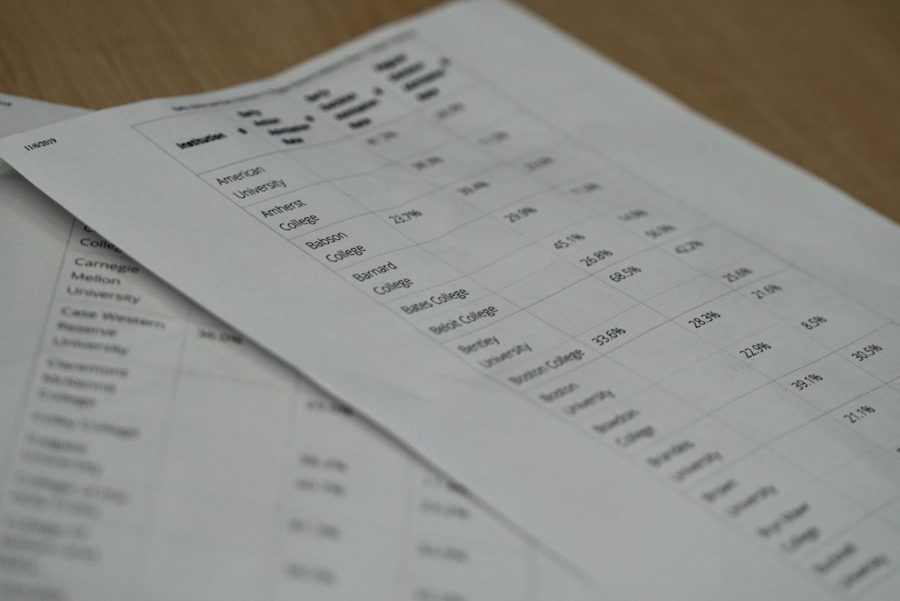The case against early decision
Almost every aspect of the college admission process has been — at some point — criticized on the grounds of fairness. Affirmative action has been ironically accused of excluding white people, the SAT’s of favoring those with financial means, Ivy League admissions offices of being biased against Asian students. The list goes on.
However, the most blatantly exclusive and least discussed scam in the admissions process is the concept of the Early Decision (ED) application deadline.
Applying to a school ED means confirming that if accepted, you will be attending. No waiting for other responses, changing your mind or comparing financial aid awards. When you apply ED, you agree to accept whatever financial aid package you’re offered. So, worst case scenario, how much should you expect to pay when applying ED? Full ticket price.
Those who defend ED would say that I am exaggerating, because “If you really can’t afford it, you can just back out of the agreement.”
That is true. If tuition is still above your Estimated Family Income (EFC) with the offered financial aid package, you could probably –– though still not certainly –– back out. But here is the beauty of ED: The college who offers you your financial aid can choose how they want you to measure your EFC: through the FAFSA, CSS profile, or even sometimes their own financial aid calculator. These methods of measuring EFC vary, and some are notoriously more scrutinous than others; You can’t back out of an ED agreement because you don’t think you can afford it, you can only back out if they don’t think you can afford it.
But wait, let’s say you do somehow get out of your ED agreement, you better hope that school’s admissions office is not very connected, because you could easily find yourself blacklisted from many other schools around the nation. What is more is your highschool reunion might be a little awkward if a school decides you and your high school’s college counseling staff are not to be trusted, and then blacklists your whole school. College forums are filled with stories about schools like Northwestern, Columbia and Brown not taking any more students from a highschool after a student pulled out from an ED agreement or was accepted and didn’t attend. Due to the ambiguity of college admissions though, there is no way to tell for sure if a blacklist is actually in place.
As you can see, applying ED requires the financial security to commit to paying for college full price. But who cares? If someone is okay paying full price, more power to them, right?
Yes. Way too much power to them. That is because colleges — as do all good businesses — prioritize the highest paying customers.
To see the advantage applying ED gives a prospective student, let’s look at the data like an experiment. First, let’s make sure we are isolating our variables; The colleges that use the ED system argue that it isn’t just that ED applicants have the ability to pay, they are the students who most want to be there. In other words, if they get in, they will come. For our experiment, we will only look at “reach schools,” schools that people apply to as shots in the dark and pipe dreams: schools where every applicant would be excited to go. When we look at these elite schools, where the ED system is really only weeding out those who can pay the full cost of tuition from those who can’t, what do we find?
Amherst College – ED applicants are 2.95 times more likely to be admitted than regular decision applicants
Brown University – ED applicants are 3.06 times more likely to be admitted than regular decision applicants
University of Pennsylvania – ED applicants are 3.14 times more likely to be admitted than regular decision applicants
Dartmouth College – ED applicants are 3.34 times more likely to be admitted than regular decision applicants
Northwestern University – ED applicants are 3.73 times more likely to be admitted than regular decision applicants
Claremont McKenna College – ED applicants are 4.49 times more likely to be admitted than regular decision applicants
Those who have the means to apply ED are two, three, four, and even four and a half steps ahead of those who don’t.
The truth is, in one way or another, everyone is doing everything they can to improve their chances at getting into their top schools. It is hard, but maybe closer to impossible, to blame one another for taking advantage of the flawed systems in which we live.
I find it extremely easy, though, to blame those who establish these systems. Especially when diversity, equity, equality and holistic review are thrown around like slogans on these institutions’ websites, brochures and tours.
The ED admission deadline is a thinly veiled ruse to increase the number of attendees with wealth and increase how much these attendees are paying.

Jordan De Padova is a senior who splits his time between both Pioneer and Community High School. He is a Managing editor going into his third year on staff who loves to listen to, talk about, and write about music. Jordan owns 4 pairs of white Reebok shoes and is most proud of his position as “Line Leader” in Mrs. Gerhart’s 5th grade class. In the future he hopes to scuba dive and produce a Billboard Hot 100 song, but as of right now he’s enjoying Mock Trial and giving free rides.








